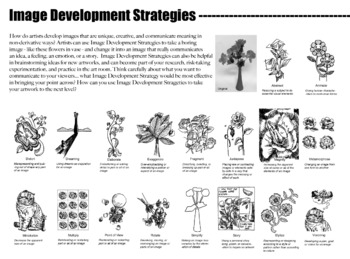Sequential Art & Graphic Novels: Creating with the Space in-between Pictures
Tom Wolfe and Will Eisner shared the understanding that the stories being told before us through imagines and words combined, reflect the different ways that society knows the world. With that being said, they also anticipated that there would be a rise in the different visual resources which must be taught in order for one to address what perception is and the full experience of it. In saying both of these things, I would have to agree with them in saying that visuals are a way that some people choose to see the world through. It is through the pictures, murals, tv, paintings, etc., that they look at and get their opinion from which is perfectly fine if that is how they understand the world through.

When taking all of this into consideration and thinking of how you could incorporate this way of thinking into a classroom, there are a couple of different ways in which you could do so. Some of these ways may be through sequential art which can look like photography, drawing, or even collages. In this chapter it talks about how students tend to be more familiar with the college illustrations that are found in books. A lot of students also tend to be familiar with comic books. When I was in school, I remember always having to draw a comic for a lot of my classes which was one of my favourite things to do. Looking back at it now, I realize how different everyone’s came out in the sense of what their characters or even settings looked like. This goes with when the chapter talks about how a single comic story can create a full portfolio of creative effort that includes a bunch of different elements like commitment to a visual medium, image development, as well as a critical reflection. With the students being able to express and create on their own, it helps them to keep engaged in the projects as they have a little bit of freedom.
References
Grauer, , Irwin, , & (editors), 102 Sequential Art & Graphic Novels: Creating with the Space in-between Pictures. E. StARTing with… () pdf (4th ed.). Canadian Society for Education through Art. (p. 102- 109)
The Magic and Mystery of Image Development
Throughout this chapter in the book, Sharon McCoubrey goes on to talk about what image developments is and why it is important when creating art. She starts off by explaining how an image is the fundamental piece to art and that image development is important to responding to the art and creating it. In saying that, she is saying that those specific images that are created by the artists and their own strategy that makes it specific to them. McCoubrey then goes on and explains the six sources of image development which are observation, memory, imagination, concepts and ideas, sensory experiences as well as the artists feelings and emotions. Each artist tends to only focus on one of these sources in each piece but sometimes the other sources will come into effect as well. Something else that was mentioned that goes hand-in-hand with the sources is the strategies of image development. She has listed twenty-two of them which is a lot to list so I am only going to share the ones that stood out to me. The ones that stuck out to me was elaboration, reproduction, point of view, simplification, and isolate. These are the ones that I would see myself turning to in order to help me create my original image. Some more key things were mentioned further on in this chapter like different activities for your students and how to get motivated for image development. They both cover how the students need to be given specific topics that will engage further thinking so that they can work with the six sources as well as the variety of strategies that were provided.
Reference
Grauer, , Irwin, , & (editors), The Magic and Mysteryof Image Development. E. StARTing with… () pdf (4th ed.). Canadian Society for Education through Art. (p. 126 – 135)
Both of these articles can go hand in hand with each other as they cover how students have the opportunity to think on their own and create something from their own thoughts. You could take the sources and strategies from the image development chapter and apply them to the student’s sequential art pieces like their comic strips. When it comes to visual art, everything goes hand in hand with each other.


izspa is number place for body to body massage in bangalore